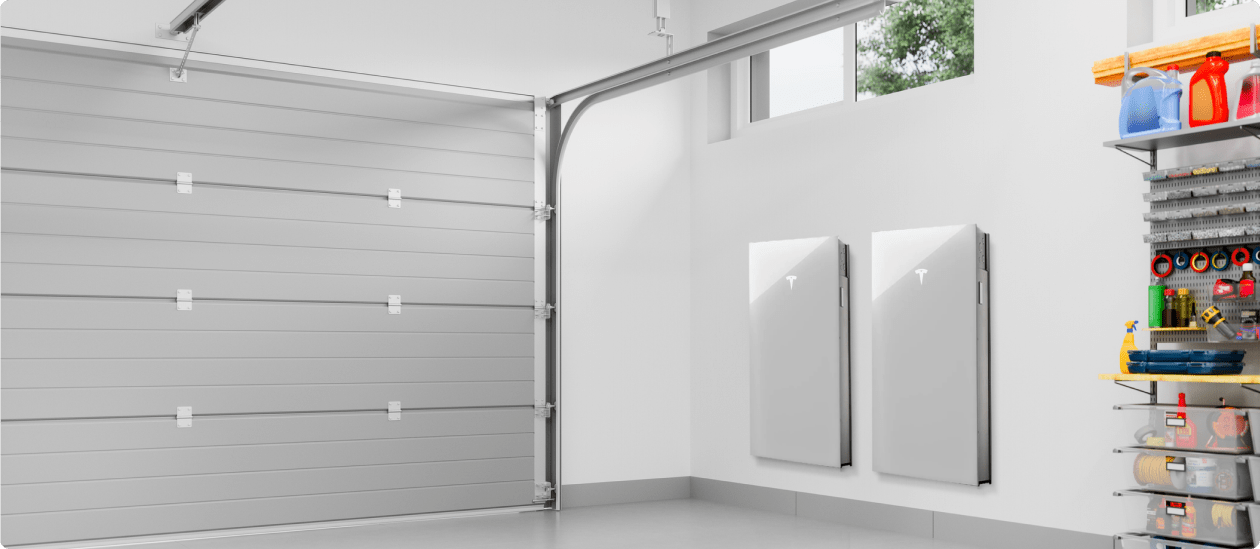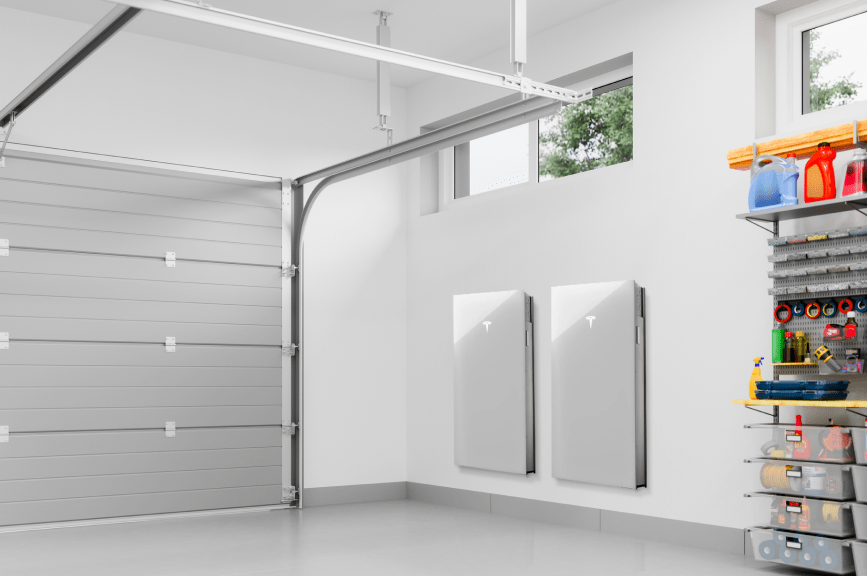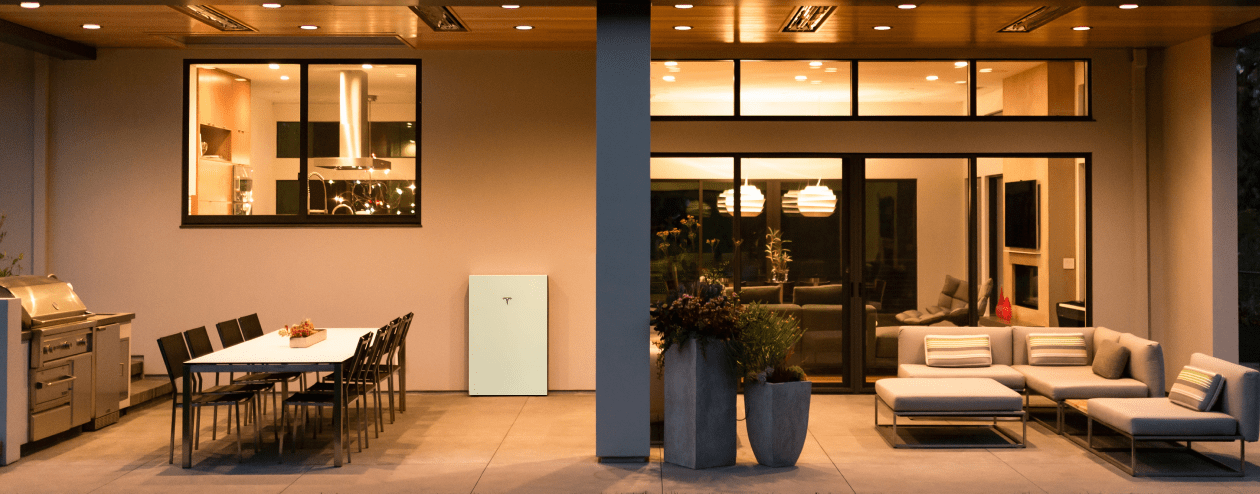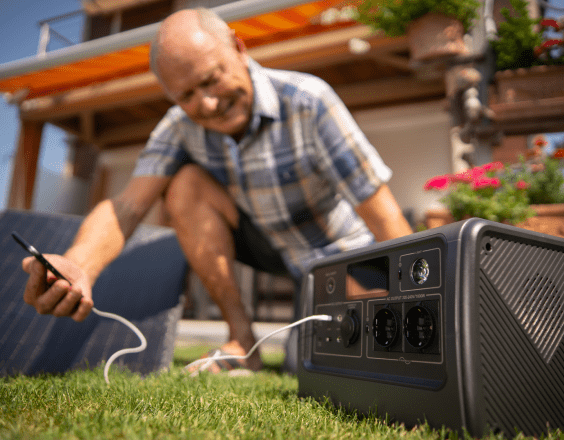

Maybe you live in a wooded area with tree canopies shading your property for much of the day. Perhaps your electricity rates aren’t high enough (yet) to warrant solar, or your HOA prohibits rooftop arrays.
But you still get those ill-timed outages.
Now there’s a way to enjoy the benefits of home battery backup without solar panels — through standalone storage.
What is Standalone Battery Storage?

A standalone battery is not connected to a solar system. Instead, it’s hardwired into your home’s main panel. With this setup, a standalone battery charges from the electric grid and stores electricity that can be used immediately or later on. This allows homeowners to offset peak utility rates and have power on hand for a rolling blackout or unplanned power outage when the battery is programmed in backup mode.
Thanks to the Inflation Reduction Act, passed in 2022, standalone batteries now qualify for the 30% federal tax credit. This means homeowners who purchase home battery backup without solar through cash or a loan may qualify for this tax reduction.*
How Does Standalone Storage Work?

For backup mode to function, your battery needs a Management Interface Device (MID). The ‘brain’ of your battery, this device operates an internal switch that isolates your home from the grid. You may hear the MID called by different names depending on the manufacturer (Gateway, aGate, system controller, etc.).
During an outage, the MID disconnects from the grid and ‘islands’ the home, while supplying power to your home’s electric appliances until it’s fully discharged. With standalone battery storage, your device is unable to charge back up via solar panels, but some MIDs can connect to a generator and recharge that way. Most likely, you’ll have power for as long as it takes for your battery to drain completely. Check our battery duration tool to see how long that might be. Once your battery is empty, it needs a stable voltage to turn back on, typically five minutes.
What are the Benefits of Home Battery Backup Without Solar?

Once standalone storage began qualifying for the 30% federal tax credit at the beginning of 2023, interest grew. Homeowners who weren’t completely sold on the idea of solar panels could add battery backup first, with the option of installing solar at a later date.

Add Solar Panels Later
Until recently, most people either install solar with battery storage at the same time or retrofit a battery to an existing solar system. With standalone storage, you now have the option to install storage first, and then add solar panels later when it makes the most sense for you. This option truly gives homeowners the freedom to live life uninterrupted, without having to commit to a full solar and battery system right away.

Maintain Power During Outages
A power outage is a major inconvenience, whether it’s 30 minutes or three hours. It prevents remote employees from working, allows your food to thaw in the freezer and spoil in the fridge, and can even cut off your home’s water supply if you rely on an electric well pump.
Installing battery storage without solar lets you keep your essential appliances powered and minimizes disruption to your daily life.* As extreme weather events pick up across the U.S., standalone storage helps provide peace of mind when a storm approaches.

Protection from Peak Electricity Rates
Standalone batteries also allow homeowners to offset high electricity prices in areas that enforce time-based rates. For instance, some utilities implement a time of use (TOU) structure, charging different prices throughout the day, month and year based on periods of high demand. By installing home storage without solar panels, your battery can charge at night when utility rates are low and strategically discharge when rates are high, powering your home for a lower cost.

Energy Arbitrage
Energy arbitrage is the process of buying grid electricity when it's cheap and selling it back when it's more expensive to get higher net metering credits. Batteries are capable of exporting power back to the grid, but they must be set up to do so. Certain utilities allow for this, and others don't.
The economics vary considerably, based on differing rate structures. For instance, energy arbitrage would be most beneficial in utility territories that offer 1-to-1 net metering, meaning they credit solar customers the full-retail rate of electricity at the time it's exported. In California, this won't make much of a difference under NEM 3.0 since net billing has now slashed export credits by an average of 75%.
Be sure to check with your local utility company whether grid exporting is allowed. Then ask about configuring your battery for exporting during the install, as retrofitting this functionality costs money and involves filing paperwork with your utility.
What Types of Batteries Can Stand Alone?
In order to function without being wired to solar panels, a battery needs to have grid-charging capabilities. Many battery manufacturers offer this feature, as it can be achieved through firmware updates.
Standalone batteries are the same physical batteries used in solar plus storage systems and add-on battery systems, which are now able to charge from the power grid. They take the same amount of time to charge from the grid as they do from solar: about eight hours for a 13.5 kilowatt-hours (kWh) battery.
Sunnova is rolling out standalone storage in markets across the U.S., with Tesla, Enphase and Franklin batteries all providing home battery backup without solar. Depending on your home, if your existing electrical panel cannot handle the additional load from a standalone battery — whether it doesn’t meet safety requirements or needs more capacity — we offer main panel upgrades (MPU), too.
We offer standalone storage leases and loans, but keep in mind that you won’t qualify for the 30% federal tax credit with a lease; you need to own the equipment outright.

Standalone Batteries vs. Portable Batteries
You may hear the term ‘portable battery’ or ‘portable power station’ when searching for standalone storage. This technology is different. Portable batteries are charged by plugging the device into a standard outlet in your home, or even a portable solar array.
Portable batteries are ideal for camping, backyard BBQs or anywhere you need power on the go.
If it’s whole-home battery backup you’re looking for, standalone batteries wired to your main panel are an option worth exploring.
Ready to learn more?

